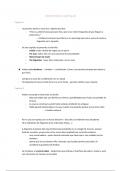Other
Research Methods
- Course
- PSYC 217 (PSYC217)
- Institution
- University Of British Columbia (UBC )
This talks about the chapters of the textbook for the first midterm exam for the course. This includes definitions along with examples. As well as the concepts are broken down into specific categories.
[Show more]







